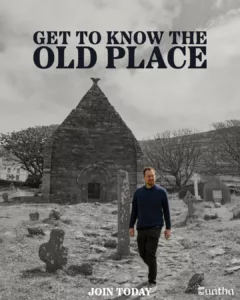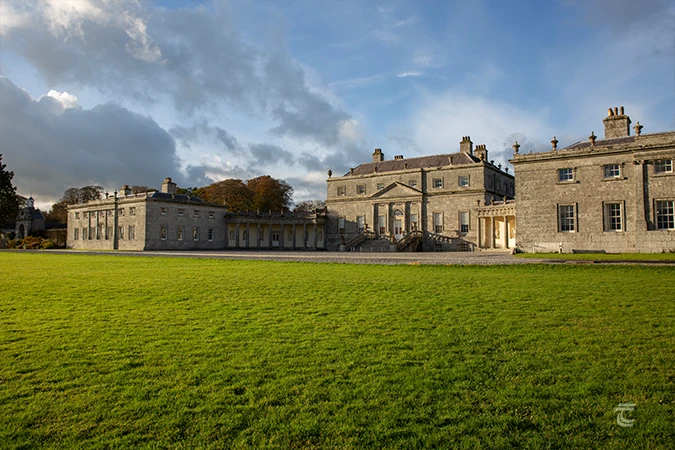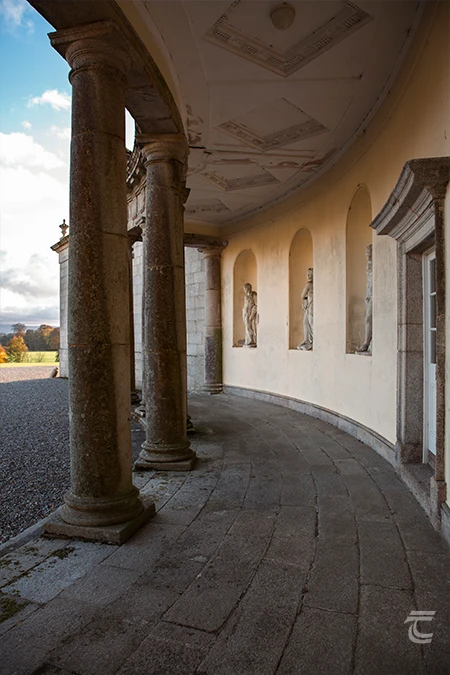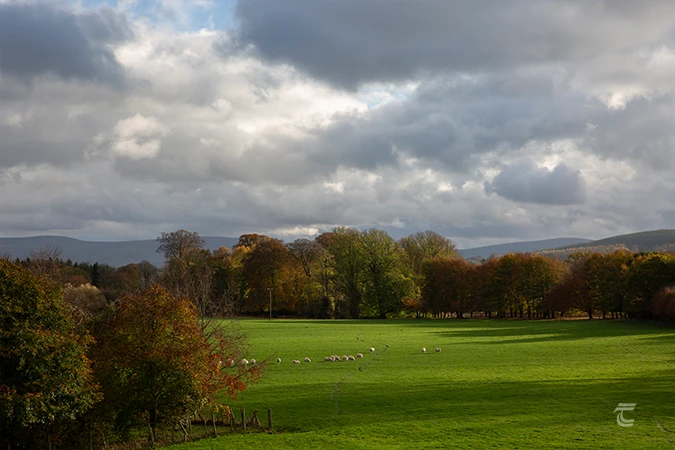Russborough House
Situated in the west of County Wicklow, near the border with Kildare, Russborough House is superb example of Palladian architecture. The house has remained relatively unaltered since it was completed in the middle of the 18th century. It was originally constructed for Joseph Leeson who had inherited a substantial sum of money from his father, as well as a successful brewing business. He commissioned the eminent architect Richard Castle to design one of the finest mansions in Ireland. Castle had gained fame through his work on Powerscourt House, Carton House and Leinster House in Dublin.
As well as being beautiful externally, the interior of Russborough is also striking. It was the first house of this kind to use West Indian mahogany, which usually served as ballast in ships and was sold off cheaply in Dublin, but here it acted as the perfect replacement for the more expensive and rarer native woods. Leeson also had marble imported from Sicily, and marvellously detailed stucco work by the Lafranchini family, which took fifteen years to complete. As work began on the construction, Leeson went on a ‘Grand Tour’ to find the finest art and treasures to fill his house. However, the ship bearing his treasures was captured by the French and never made it to Ireland. Undeterred, Joseph set sail again with his son and nephew to gather more fine works of art, statues and furniture.
Joseph became Earl of Milltown in 1763, and his descendants continued to collect fine art to adorn the walls of Russborough House, until 1902 when Geraldine Evelyn Stanhope, wife of the sixth Lord Milltown, donated the contents of the house to the National Gallery in Dublin, where much of it is on display today in the Milltown Wing.
For practical information about visiting this site Click Here
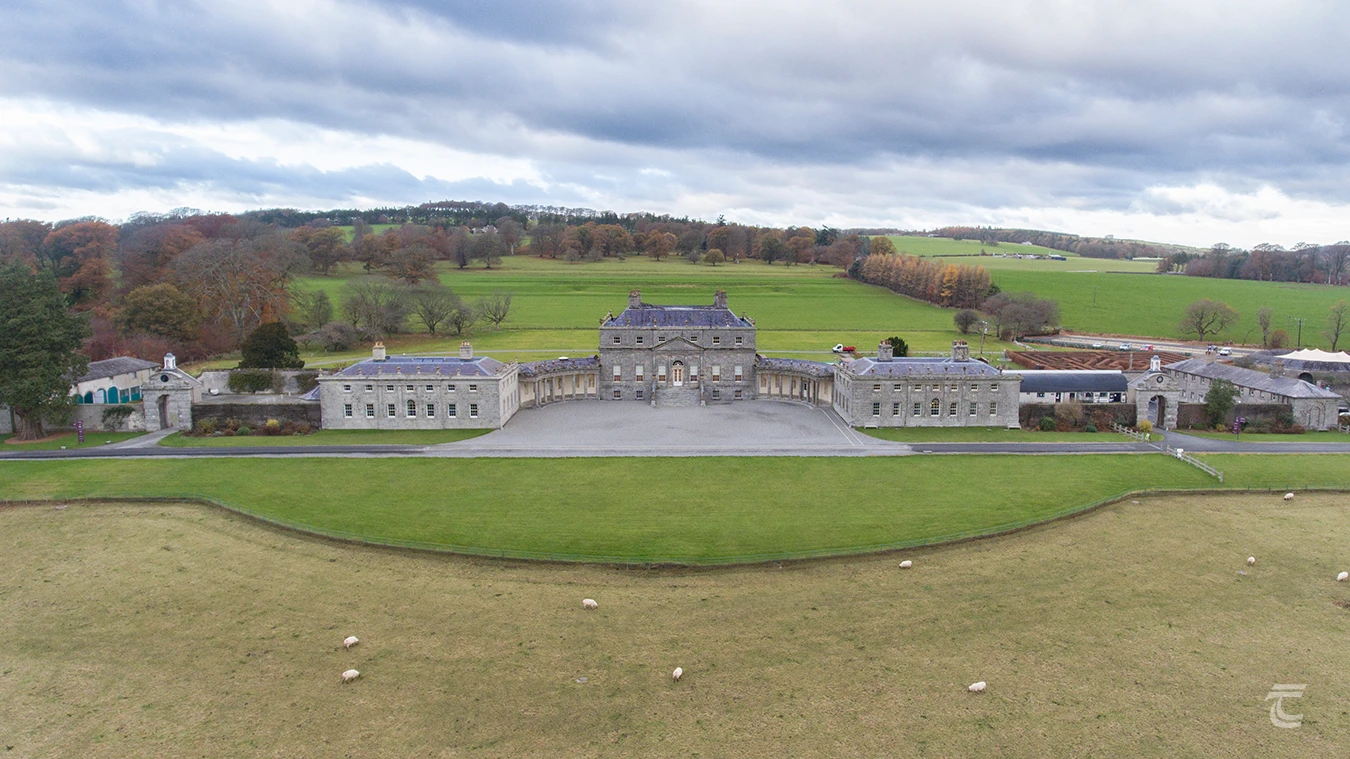
Aerial view of Russborough House and Park • Wicklow
The Beits of Russborough House
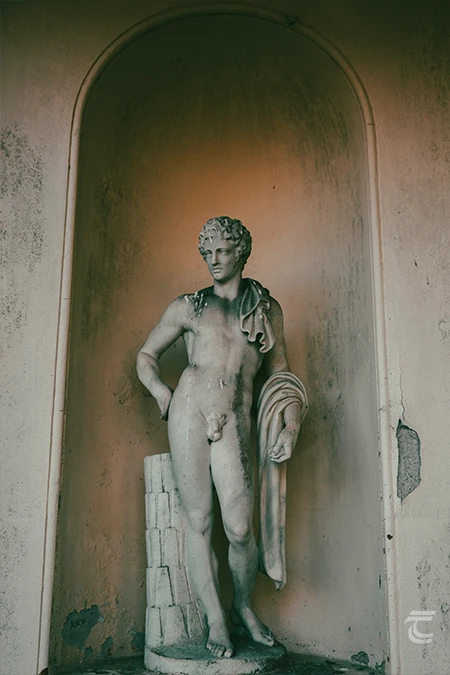
Classical statue near the entrance • Russborough House
In 1931, Russborough House was sold to Captain Denis Daly, who sold it twenty years later to Sir Alfred Beit, who like Joseph Leeson, was another avid collector of art. Sir Alfred and his wife, Lady Clementine, were immensely wealthy. The Beit family had earned their fortune through mining in Africa, and Sir Alfred’s uncle had co-founded the famous De Beers Diamond Mining Company.
The Beits’ love of art began when Alfred’s grandfather began collecting. He left it to his son Otto, who left the collection, and the passion for art, to his son Alfred. He lined the walls of Russborough House with works by masters such as Goya, Velázquez, Vermeer and Rubens. Unfortunately for the Beits, their collection had become internationally famous. Paintings were stolen from the house in 1974. And it was raided again by the infamous Martin Cahill and his gang in 1986, this still remains Ireland’s largest art heist. Thankfully, a number of works were recovered, but the raid left a number damaged beyond repair. In 1988 the Beits donated the majority of their collection to the National Gallery, where you can find them on display in the Beit Wing. Russborough was broken into on two further occasions, but the paintings were recovered both times.
The Beits established the Alfred Beit Foundation that has managed the house since 1976. Sir Alfred died in Dublin in 1994 and Lady Beit continued to live on at Russborough until her death in 2005. Today Russborough is an enchanting place to visit. Along with the beautiful house and art you can also enjoy the gardens and the extensive 200 acre parkland. The parkland surrounding Russborough House was laid out in an 18th-century style and original demesne features still exist, such as a walled garden, an ice house, lime kiln, grand entrance arch, field obelisks and terracing, and a circular hippodrome. There are a number of trails to enjoy, and it offers a lovely day out at any time of the year.

Classical statue near the entrance • Russborough House
Upper left: Russborough House • Lower left: autumnal light on the grounds • Right: the classically-inspired palladian architecture
Top: Russborough House • Middle: the classically-inspired palladian architecture • Bottom: autumnal light on the grounds
Russborough House & Park Visitor Information
One of the most beautiful palladian-style houses in Ireland, with an extensive parkland and wealth of art to discover.
